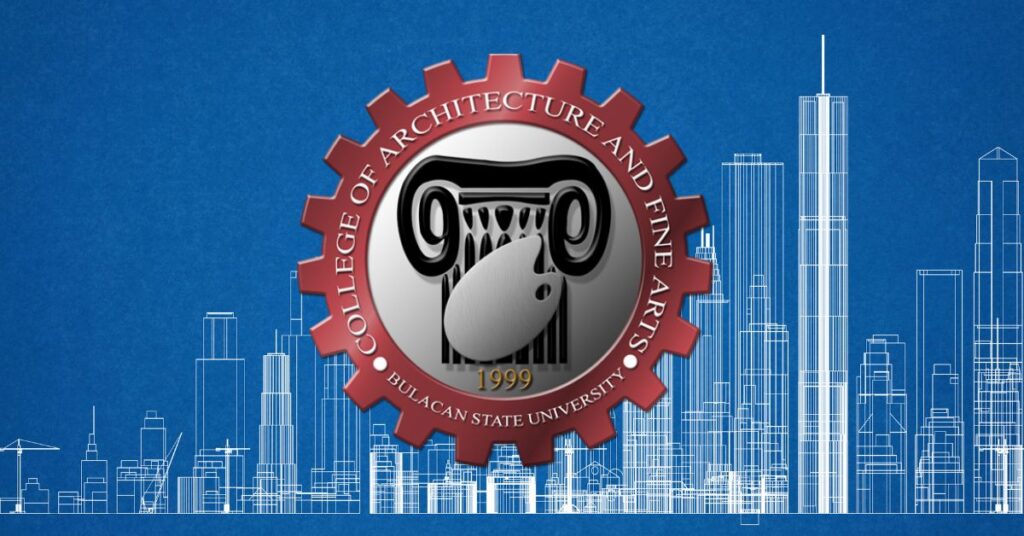Table of Contents
Architecture is the art and science of designing and constructing buildings and other structures, including planning the spaces within and around them. It involves creating and shaping the built environment in a practical, safe, and aesthetically pleasing way while also considering the cultural, social, and environmental context in which the building will be located.
Architecture requires creativity, technical skills, and an understanding of materials, construction methods, and building codes. It is a discipline that encompasses a wide range of specialties, including residential design, commercial design, urban design, and landscape architecture.
As of 2023, Bulacan State University (BulSU) is the only school in the province offering a Bachelor of Science in Architecture course. The school has been performing well, with a relatively high passing percentage in the local board exams.
Arch. Judy Ann Larin placed 3rd in the June 2017 Architect Licensure Examination with 82.90 ratings. Last year, Arch. Michaela Ferrer Grabol landed in 7th place in the June 2022 Architect Licensure Exam ALE/LEA. Aside from that, I have a lot of BulSU batchmates who are now successful Architects here and abroad.
BulSU is the Top Architecture School in Bulacan
The Bachelor of Science in Architecture (BS Arch) is a five-year baccalaureate degree program offered by the College of Architecture and Fine Arts (CAFA).

When I was still a freshman studying at BulSU, architecture and engineering students were under the College of Engineering and Architecture. By 1999, the Institute of Architecture and Fine Arts (IARFA) was established through the efforts of then-school President Rosario Pimentel. Arch. Ma. Saturnina C. Parungao, the Architecture Department Head then, was appointed Director of the Institute.
By the opening of the school year 2007-2008, the Institute of Architecture and Fine Arts was converted to the College of Architecture and Fine Arts. Aside from BS in Architecture, BulSU also offers a Bachelor of Fine Arts and a Bachelor of Science in Landscape Architecture.
Graduating senior high school students interested in studying at BulSU for college should check the university’s admission requirements found on their website at https://bulsu.edu.ph/admission/requirements.php.
Architecture has board examinations, which require applicants to have an 85% GPA average or higher. Contact the university’s admission office at (044) 919 7800 with extension 1087.
It’s important to note that the “best” architecture school for one person may not be the best for another, as each individual has their own needs, goals, and preferences. Factors to consider when choosing an architecture school include the curriculum, faculty, facilities, location, and opportunities for internships and hands-on learning experiences.

There are several factors to consider when determining if architecture is the best course for you. Here are some things to think about:
- Passion: Do you have a genuine interest in the design of buildings and the built environment? Do you enjoy drawing, sketching, and visualizing your ideas?
- Creativity: Architecture requires a strong sense of creativity and the ability to think outside the box. Architecture may be a good fit if you enjoy problem-solving and creating unique solutions.
- Attention to detail: Architecture is a highly detail-oriented field, and you’ll need to have a good eye for design and attention to detail to be successful.
- Technical skills: Architecture requires a solid understanding of mathematics, science, and engineering, so you’ll need to be comfortable with technical subjects.
- Patience and persistence: Architecture projects can take years to complete and require much hard work and dedication. Architecture may be a good fit for you if you’re patient and willing to put in the effort needed to see your projects through to completion.
- Collaboration: Architecture is a collaborative field, and you’ll work closely with clients, engineers, contractors, and other professionals throughout the design and construction process. Architecture may be a good fit if you enjoy working in a team environment.
Ultimately, the best way to determine if architecture is the right fit for you is to learn more about the field, talk to architects and architecture students, and consider your strengths, interests, and career goals.
The cost of an architecture course can vary depending on several factors, such as the institution, location, and program length. Architecture programs can be expensive, mainly if offered by private universities or in an urban area. The tuition, fees, materials, and living expenses can add up quickly, and many students need to take out loans or work part-time to cover their education costs.
That being said, there are also affordable options for pursuing an architecture degree. State universities offer low-cost or free tuition for residents, and financial aid or scholarship opportunities may be available to help cover the cost of an architecture program. Additionally, many students can find part-time work or internships related to architecture, which can offset the cost of their education and provide valuable hands-on experience.
Ultimately, the cost of an architecture degree should not be the only factor to consider when deciding whether or not to pursue a career in architecture. It’s essential to weigh the costs against the potential benefits of a career in architecture, such as job satisfaction, earning potential, and the opportunity to impact the built environment positively.

The Philippine Architecture Board Exam is a licensure exam for aspiring architects in the Philippines. It is administered by the Professional Regulation Commission (PRC) and is taken by graduates of architecture programs who wish to become licensed architects.
The architecture board exam is typically held twice a year, in June and December, and consists of two parts: written and practical examinations. The written test covers building design and construction, building materials and systems, building codes and standards, and professional ethics. The helpful review evaluates the examinee’s ability to apply architectural principles in a design project.
To become a licensed architect in the Philippines, you must pass both the written and practical portions of the architecture board exam and meet other requirements set by the PRC, such as completing a minimum number of supervised work experience hours.
The architecture board exam is challenging and rigorous, and the pass rate can be low. However, passing the exam is essential to becoming a licensed architect and practicing architecture in the Philippines. Preparing for the exam typically involves:
- Studying the relevant codes and standards.
- Reviewing coursework.
- Engaging in hands-on design projects.
The difficulty of passing the Philippine Architecture Board Exam can vary depending on the individual and their preparation. Some architecture graduates find the exam challenging and may need to take it multiple times before passing, while others can pass on their first attempt.
The architecture board exam covers various topics, including building design and construction, building materials and systems, building codes and standards, and professional ethics. It is designed to evaluate the examinee’s mastery of the principles and practices of architecture and requires a deep understanding of the field.
Passing the architecture board exam requires significant time and effort, including dedicated study and preparation. Many architecture graduates find it helpful to review their coursework, engage in hands-on design projects, and take review courses or study groups to prepare for the exam.
It’s essential to remember that the difficulty of the architecture board exam is not the only factor to consider when deciding whether or not to pursue a career in architecture. The exam is just one aspect of becoming a licensed architect. It is ultimately up to each individual to determine how they approach the exam and their preparation.
Read A Short History of Balagtas or Big Double-A (Bigaa) — from Late 1500’s to Present, Visita Iglesia: A Tour to 7 of the Oldest Churches in Bulacan, and KAMESTIZUHAN DISTRICT: Journey through Historic Malolos
Sources:
- About Bulsu. Bulacan State University. (n.d.). Retrieved February 10, 2023, from https://bulsu.edu.ph/about/contact-information
- Admin, P. R. C. B. (2022, June 22). Result: June 2022 architect ALE board exam, top 10 examinees. PRC Board. Retrieved February 10, 2023, from https://www.prcboard.com/result-june-2022-architect-ale-board-exam-top-10-examinees/
- Admin. (n.d.). Top 10 passers: SLU Grad tops June 2017 Architect Board Exam (ALE). The Summit Express. Retrieved February 10, 2023, from https://www.thesummitexpress.com/2017/06/top-10-passers-slu-grad-tops-june-2017-architect-board-exam-ale.html
- Admission requirements: Bulacan State University. Admission Requirements | Bulacan State University. (n.d.). Retrieved February 10, 2023, from https://bulsu.edu.ph/admission/requirements.php
- College of Architecture and Fine Arts: Bulacan State University. College of Architecture and Fine Arts | Bulacan State University. (n.d.). Retrieved February 10, 2023, from https://bulsu.edu.ph/academics/colleges.php?college_id=CAFA